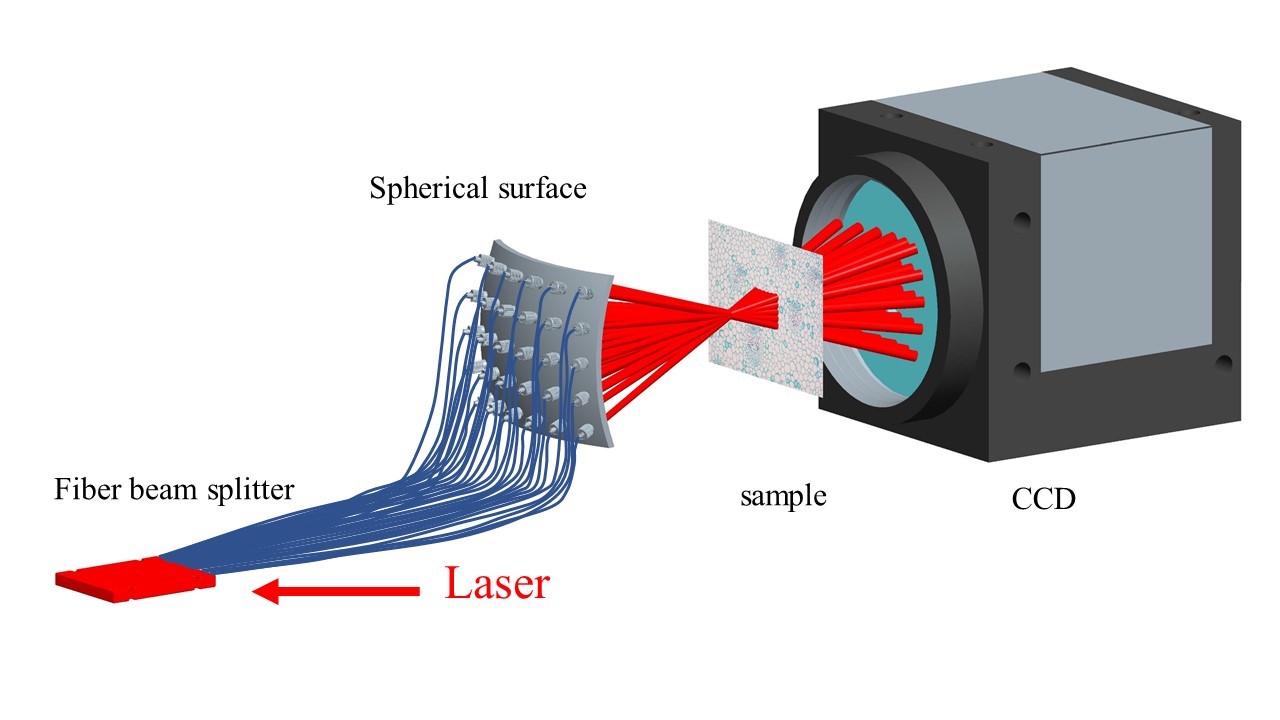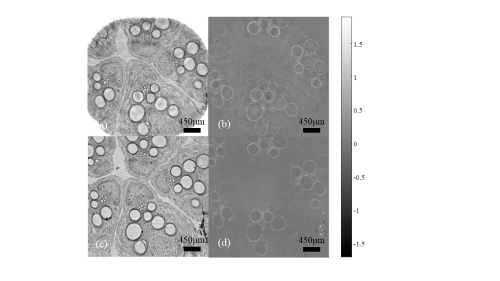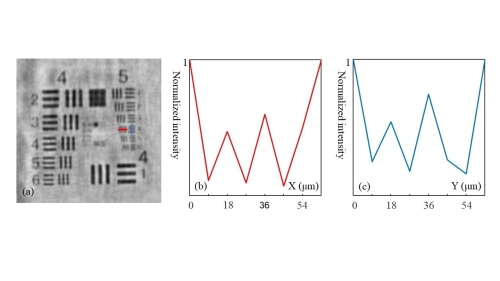The image reconstruction technique based on Ptychography has the characteristics of the large field of view (FOV) and high resolution, but the traditional scanning Ptychography needs a lot of time to acquire data, so it can not be applied for the measurement of dynamic samples. In order to improve the data acquisition speed, scholars have proposed a variety of single-shot imaging schemes, but the resolution of the imaging system has been limited by the highly tilted illumination.
Recently, based on the principle of Ptychography, researchers from the Shanghai Institute of Optics and Fine Mechanics (SIOM) of the Chinese Academy of Sciences (CAS) have proposed a multi-angle illumination imaging system, solved the imaging problem under the condition of highly tilted illumination, and put forward a new single-shot imaging algorithm. The research progress was published on Optics Express on Sep. 14, 2020.
The proposed imaging system using highly tilted illumination to realize accurate phase retrieval from a single frame diffraction pattern, the sub-diffraction patterns generated by a bunch of laser beams propagating at greater angles concerning the optical axis, which are non-overlapping on the CCD plane. A non-paraxial reconstruction algorithm is developed to numerically propagate these highly tilted laser beams in back and forth iterative computations. Faster data acquisition and higher reconstruction quality are achieved in the proposed method by recording non-overlapping sub-diffraction patterns in a single frame and eliminating usual reconstruction errors arising from paraxial approximations.
Highly tilted illuminating beams allow larger separation between adjacent sub-diffraction patterns, and hence more high order diffraction components which are significant in improvement in spatial resolution of single shot PIE can be recorded. The overlapping between diffraction patterns is avoided, and the non-paraxial iterative computation method proposed remarkably reduces the reconstruction error caused by commonly adopted paraxial approximation while avoiding under sampling of phase on both sample and detector planes. All these efforts enhance the reconstruction quality of a single shot PIE. The feasibility of this proposed method is verified both numerically and experimentally. A spatial resolution of 11 μm is reached experimentally. This makes the single shot PIE a more valuable tool in various applications, especially for dynamic sample imaging and 3D imaging.
This work is supported by National Natural Science Foundation of China, Shanghai Science and Technology Innovation Action Plan Project, Shanghai Sailing Program, Scientific Instrument Developing Project, Strategic Priority Research Program of Chinese Academy of Sciences.

Fig. 1 Setup of single-shot ptychography with multi-angle illumination. (Image by SIOM)

Fig. 2 Reconstructed (a) amplitude and (b) phase of the specimen obtained by single-shot PIE. Reconstructed (a) amplitude and (b) phase of the specimen obtained by common scanning PIE. (Image by SIOM)

Fig. 3 The experimental results on USAF 1951 test target. (a)Intensity image retrieved, intensity along (b) horizontal direction and (c)vertical direction (Image by SIOM)
Article website:
https://doi.org/10.1364/OE.402374
Contact:
WU Xiufeng
General Administrative Office
Shanghai Institute of Optics and Fine Mechanics, CAS
Email: xfwu@siom.ac.cn
Web: http://english.siom.cas.cn/